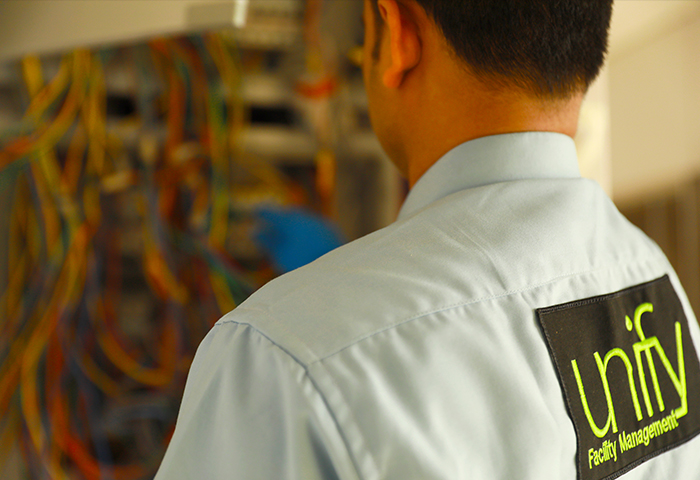4 Ways IoT is Transforming Facility Management

Tags: IoT for facility management
Facility management is a broad spectrum of daily responsibilities, including documentation, housekeeping, security, and many more. Therefore, to stay atop the game, facility management firms across the world are embracing technology to transform the client’s workplace and experience; one such technology is the Internet of Things or IoT for facility management.
About IoT for Facility Management
Internet of Technology can be understood as a network of various technologies and appliances, including sensors, meters, and dashboards, that are capable of sharing useful information and data. The system uses this web of data to automatically optimize the facility experience for the employees.
IoT, along with smart buildings, is transforming the facilities across the country, and the following are some of the ways it is doing that.
1. Sensor-Based Automation
IoT uses a web of sensors embedded across the facility to track various activities and environmental factors. The captured environmental data is then used to enhance the facility experience for the employees, alert the facility manager of potential dangers, and reduce energy consumption at unused spaces.
For instance, an occupational sensor would detect the lack of activity in a specific room and turn off all the electronic appliances to save energy; or ammonia sensors can detect the rising ammonia levels in the washrooms and alert the housekeeping staff so they can clean the space as soon as possible.
2. Reduced Operational Costs
A complementary facet of sensor-based automation is reduced operational costs. The IoT network finds and analyses usage patterns across the facility and uses this information to optimise the resources across the facility.
For example, instead of keeping the lights and appliances on in the staff kitchen, the IoT network would instead analyse the employees’ usage patterns and shut them down when they’re least likely to be used during the day.
Doing so across the facility can save the facility a lot of money that would otherwise be spent on energy consumption.
3. Efficient Employee Performance
IoT for facility management can benefit the employees, too, as it removes the daily frustrations from the workplace and helps seamlessly guide the employees through their day. One of the most basic IoT applications, in this case, is the use of sensors and smart HVAC to regulate the temperature and humidity to ensure maximum comfort throughout the day.
Additionally, the IoT may also use beacons to provide useful information, capture feedback, or push relevant alerts to the employees and visitors at the facility. For example, the network can alert the employee to take regular breaks during the day and improve their productivity.
4. Risk Mitigation Efficiency
Security is one major concern at modern workplaces, and IoT enables the facility to take a huge leap in this regard. It helps plan the security and mitigate various risks at the facility. IoT utilises various sensors, tags, cameras, and beacons for ID confirmation, threat detection, and alerting the security personnel of any unauthorised activities, which increase the workplace’s overall security.
Within a few years, workplaces will be dominated by digital-native employees who would appreciate the use of IoT in their workplaces. So, to prepare your workplace for the future, you need to integrate these technologies into your workplace. Fortunately, Unify has begun incorporating some of these technologies within our integrated facility management operations. Reach out to us to know more about our integrated facility management services..
